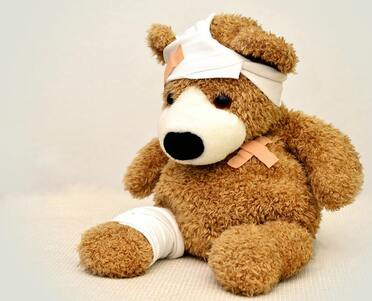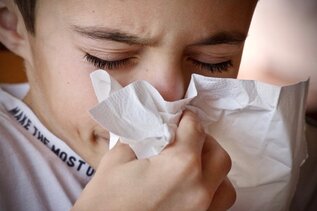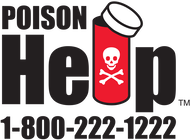|
Sooner or later, every child will fall and strike his or her head. Falls are especially common when your child is learning to walk. Most head injuries simply result in a scalp injury. Big bumps can occur with minor injuries because the blood supply to the scalp is so plentiful. For the same reason, small cuts on the scalp or face can bleed profusely.
Home Care Steps: 1) If there is a scrape, wash it off with soap and water. 2) Apply pressure with a clean cloth for 10 minutes to stop any bleeding. 3) For swelling, apply ice for 20 minutes. (Frozen vegetables such as peas work well or keep a wet sponge in a zippered bag in the freezer). For more serious head injuries, look for the following symptoms:
Call our office immediately if:
Comments
The common cold involves an array of symptoms including runny or stuffy nose, congestion, fever, sore throat, cough, hoarseness, red eyes, and swollen lymph nodes in the neck. A cold or URI is a viral infection of the nose and throat.
Cold viruses are spread from one person to another by droplets through hand contact, coughing, and sneezing, not by cold air or drafts. Since there are up to 200 different cold viruses, healthy children still commonly contract six to ten colds each year. A typical course of cold symptoms may include a fever that lasts 3 days, nose and throat symptoms that last 1- 2 weeks, and a cough that may linger for 2 to 3 weeks. The main things to watch for are secondary bacterial infections such as ear infections, yellow drainage from the eyes, sinus pressure or pain, or difficulty breathing. Home care remedies usually do not impact how long a cold lasts, but can relieve many of the symptoms. Examples of home treatment for associated symptoms include:
The older child should try to gently blow his nose after instilling the saline drops. Use nasal washes 2-4 times per day or whenever your child is having trouble breathing through his nose. When your child sleeps you may use a cool mist humidifier in his or her room. The most effective steam room, however, is your smallest bathroom with the shower running on hot. Sit in the steamy room with your child for 20 minutes three or more times a day. Hospitals Washington, D.C.
Poison Control Center
Phone: 1-800-222-1222 Do you suspect that your child has been exposed to or ingested something poisonous (including household agents, medications, or plants)? They will give you exact instructions about the necessary steps to follow.
Call to update us after you have carried out the Poison Center’s instructions. Make sure to use the appropriate method for taking your child's temperature depending on their age (click here to find out Is [It] a Fever and What to Do?).
Rectal temperature
Oral or Eardrum Older babies and toddlers may have temperatures between 103° and 105°F. Your child has a fever if any of the following apply:
The body’s average rectal temperature is 98.6 °F, but it normally fluctuates during the day, tending to rise toward the end of the day. Fever is a symptom, not a disease. Fever is the body’s normal response to infections and plays a role in fighting them. The usual fevers (100° to 104° F) that all children get are usually not harmful in themselves. Does your child have a fever? Apply appropriate Fever Care to look after your child.
Knowing what to look for and how to determine if something is an emergency is critical to help you decide what action to take. Please use this post as a reference. Here are some life-threatening emergencies that warrant immediate action:
What do you do in an emergency? Call 911
|
AuthorThe staff of Panda Pediatrics, located in Washington, D.C. Categories
All
Archives |
|
Schedule your visit today!
|
HOURSMon: 9am-5pm
Tues: 9am-5pm Wed: 9am-5pm Thurs: 9am-5pm Fri: 9am-2pm Closed daily 12pm-1pm. |
Phone: 202-466-5350
Fax: 202-466-8555 After Hours: 703-535-1856 Email: info@pandaped.com Billing: 1-888-969-3735, option# 1 |
ADDRESS2440 M Street NW
Suite #422 Washington, DC 20037 POLICIES |




 RSS Feed
RSS Feed

